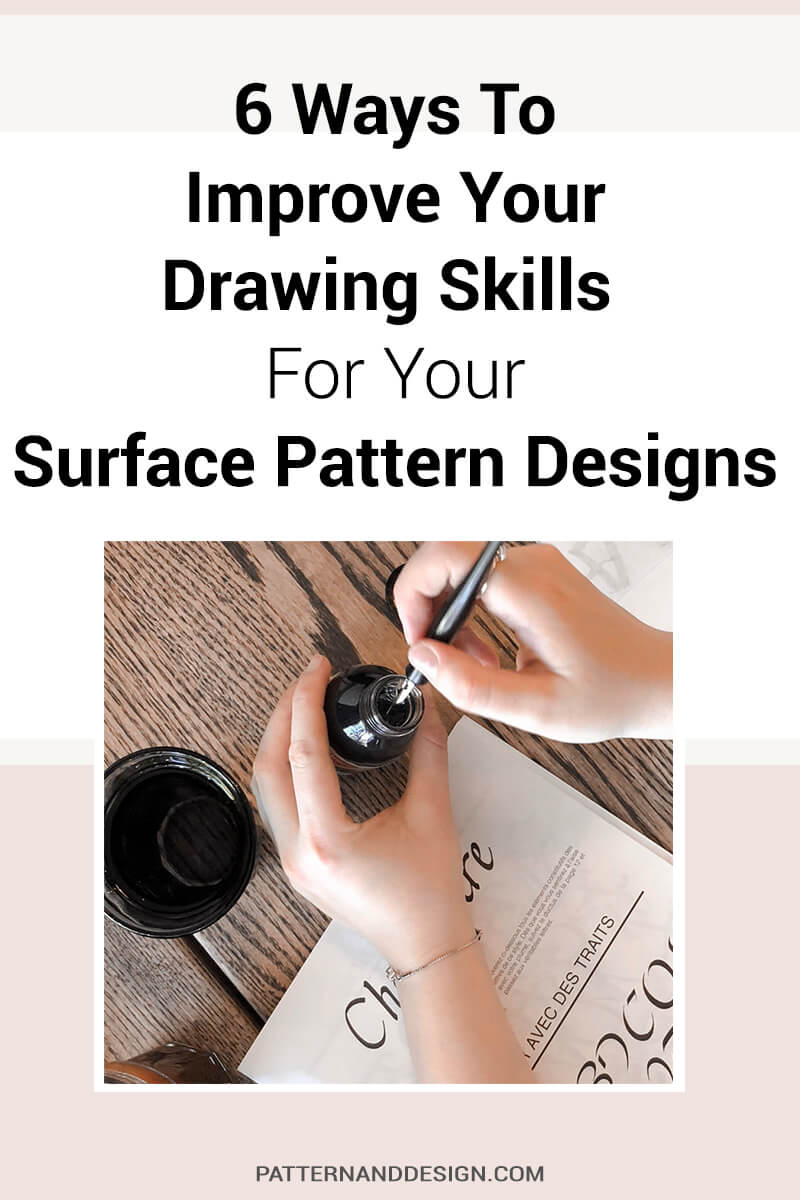learn about all things surface pattern design including the creative design process, being a successful creative entrepreneur & stepping into the mindset of a successful designer
welcome to the pattern design blog
blog
The
Categories
Popular
6 Ways to Improve Your Drawing Skills
There are many skills that you need to develop to be a successful surface pattern designer but often at the heart of a great design is drawing. I’ve always argued that you don’t need to be a great or the best drawer to be a successful surface pattern designer but it is at the core of designing so it’s a skill that you should nurture, practice and develop constantly. There are lots of ways you can help develop and improve your skills so let’s look at 6 ways to improve your drawing skills.
6 Ways to Improve your Drawing Skills for your Surface Pattern Designs
Drawing at its simplest form is putting marks on the page. It’s a difficult skill to master however drawing is something everyone can do. Even the most successful drawers will invest time practicing and honing their skill. It’s an essential skill to have for surface pattern designers as it will afford you more opportunities for a vast range of work. The patience and time you spend developing your drawing skills will pay off in the long run.
There are lots of fun exercises you can do that will help you improve your skills and we are going to look at 6:
1. Draw with the Opposite hand
A really fun exercise and way of loosening up your drawing style is to draw with the wrong hand e.g. if you’re right handed then draw with your left hand.
We rely on being able to draw effectively with our dominant hand so by drawing with the opposite hand we can’t rely on the tricks we have developed or have become inbuilt. We are forced to be free and let go of preconceptions and the results are organic and free-flowing forms.
2. Contour Drawing
The technique of contour drawing involves drawing the outline of the object only. Your drawing will define the edge of the form.
Contour drawing is drawing at its simplest and is one of the first ways we learn how to draw. The benefits of contour drawings are they allow us to recognise the purest and simplest form of an object.
Click here to find out more about different ways to use line without your designs.
3. Blind Contour Drawing
Blind contour drawing uses the same technique as contour drawing. Your drawings will be only of the outline shape or edge of your object. The difference is when you’re creating a blind contour drawing you will look at the object only and you will not look at your page.
Blind contour drawing is a great way of improving hand to eye coordination.
4. Continuous Line Drawing
The continuous line drawing technique requires you to draw your object without taking your pencil off the page. The result is a free-flowing, unbroken line that is created by the pencil moving backward and forwards across the surface of the paper. At times the lines will double on each other creating interesting effects.
5. Draw Upside Down
Drawing your object upside down helps you to draw what you actually see rather than what you think you see. It will give you a new perspective. When you’ve finished, turn your page the right way. You may be surprised by how accurate your drawing is.
6. Draw the Negative Spaces
This technique involves drawing the spaces and shapes around the object, not the object itself. Start by looking at the angles and shapes that make up spaces around your objects. Concentrating on drawing the negative areas will allow you to look at your object in a new perspective.
Rather than drawing what you know your object to be, you will draw what you see. You can try adding tone and texture to the negative areas and leaving the area within your object empty.
Make sure you keep challenging yourself to keep improving your drawing skills. By doing some quick sketches every day you’ll be surprised at how much your drawing skills will improve.

Want to create another revenue stream by turning your art into surface pattern designs?
Get the free guide
Get my FREE Surface Pattern Design Starter Guide